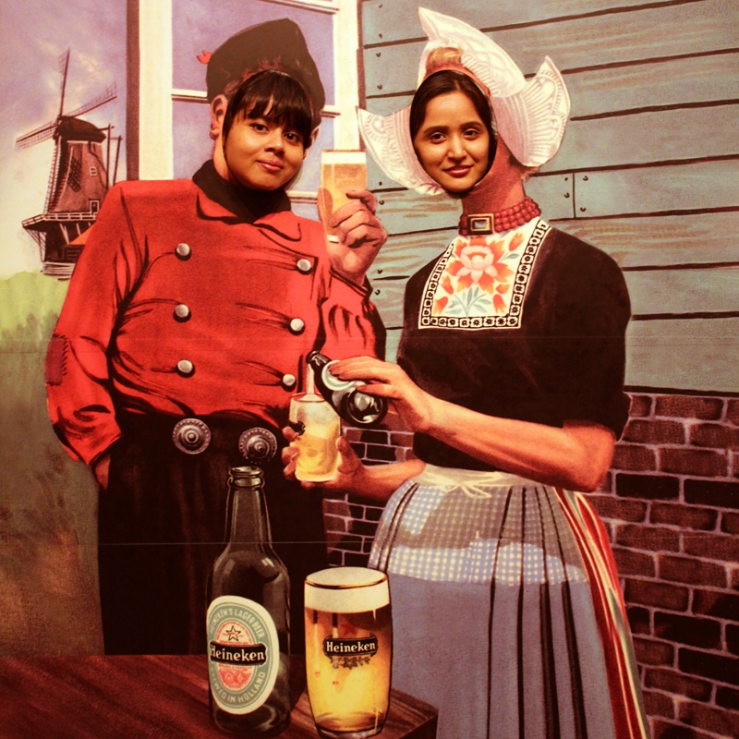Not everyone ventures into Amsterdam with the same enthusiasm to visit a museum as I did when I landed at Museumplein. While tourists flocked to the ‘I Amsterdam’ for a souvenir picture, I readied myself for what was museum day for me in Amsterdam. A day when drinking and smoking would take a backseat while I soaked the much needed art into my system. While Musuemplein has the famous Van Gogh Museum as well as the Rijksmuseum [houses Rembrandt], the one museum I absolutely and utterly loved was the Stedelijk. Not only do you get a staggering 50% off on flashing your student ID, everything about the museum is quirky. If modern art is your thing, forget Tate, I’ve found us a new love!
The architecture, the curation, the three stories high textile wall marking the levels, the little coffee shop outside, I loved everything about the museum. The Bad Thoughts show was excellently curated. Loved the short film by Teresa Hubbard and Alexander Birchler called Single Wide. Quite an intriguing piece of film making.
I have to admit, I’ve always fancied signage in museums, especially the toilets. Sometimes they precede the art for me [haw!]. Though Stedelijk scores high on the art quotient, it’s not too far from the toilet quotient either [Serpentine still takes the cake on that one]. While it may come as a shock to many, Van Gogh museum is totally overhyped and under delivers. Unless the man is a God to you, roasting yourself in the blazing sun for an hour and half to find out that the ‘Sunflowers’ are on a loan to the National Gallery in London for 6 months is pure torture. Only bright side is all the yellow the museum throws at you irrespective of the color palette.
By the time I could squeeze my way out of the gift shop, my body had contracted alcohol withdrawal symptoms. So I promptly decided it was time for the Heineken experience. For starters, it is not much of an ‘experience’ to write home about, if you exclude the two beers (and half) included in the ticket (€17). The (supposedly) 4D Heineken ‘ride’ is pretty much a let down lest you enjoy a mini earthquake and water being sprayed at you while you’re a barley grain on a mission to be brewed. PS: Some bubble guns are also let loose for extra effect.
But I have nothing to complain about since with my two pennies not only did I score a free beer mug [official merchandise], I also have a cool certificate as the official Heineken pourer! [for what it’s worth]
While I could go on about how wonderful my rest of the evening was, my memory fails me. The last I remember of this day is stumbling into a ‘coffee shop’ near Spui and gobbling down some ‘space cake’. Not for the weak hearted I must warn. As helpful as the Dutch folks are [very might I add], it’s better to know when the last tram is or where your night bus is from. Unlike London, night buses in Amsterdam run once every hour and the wait unfortunately is strenuous enough to kill any joy you might have been riding on previously.
Till then here’s to some beer by my lovely wife.
 Cheers!
Cheers!
xx










